There are many ways you can spend money generating leads on Linkedin.
And they range from free to real expensive (think $ 10k per lead).
On the free side, you could just do it yourself.
If you have 5 hours a day to do thoughtful Linkedin outreach and you know how to write good copy, who exactly to target, and how to personalize your Linkedin messages, then by all means, you can do it yourself.
You won’t even have to pay for InMails.
And if you can do this properly, you will get leads.
In this case, maybe lead generation will cost a Linkedin Sales Navigator subscription. That will be like $79 per month, BUT you will have to do ALL the work yourself.
The next level down is finding a virtual assistant, who maybe charges 10 bucks an hour to help take some of that off your hands.
And frankly, if you know exactly which strategy works, and you’re fine hiring and training an individual to do Linkedin outreach for you, this could cost you like $1000-$2000 bucks per month.
The only catch is that you will have to train, support and monitor your V.A. to make sure that they’re doing a good job.
But this only really works if you have the right strategy in place.
The next thing you could do is hire a Linkedin lead generation agency, and those costs vary wildly.
From those that are one-man operators, who don’t have a good track record, you might find yourself spending the lowest amount.
But generally, if you decide to hire a Linkedin lead generation agency you can expect to pay about $2000 – $7000 per month, depending on which agency you go with.
But on average, the good ones are going to range from $2500 (at the low end) per month – $5500 at the high end per month.
Then you could also look at Linkedin ads, and that’s going to be quite a bit more than the other options.
So as you can see the cost of Linkedin lead generation varies wildly, depending on which option you choose.
We will delve into some of these options in greater detail, so keep reading.
Interested in a free 15 Minute strategy call?
What’s the cost of hiring a Linkedin Lead Generation agency?
If you are looking for immediate leads, then hiring a LinkedIn lead generation agency to find qualified prospects might be a good option.
Why?
Because outsourcing lead gen is more cost-effective than hiring a full-time sales rep. The average salary of an SDR in the US is about $53,879 per year.
And on top of this many of them still receive cash compensation of about $22,186.
Meaning, that you could be paying $76,065 per year to one SDR.
This doesn’t include things like office equipment, courses, renting office space, data packages, or lead generation software such as Expandi, Crunchbase, or Linkedin Sales Navigator.
And this is why many companies choose to hire lead generation services.
Why? Because it’s more cost-effective.
They don’t have to pay full-time salaries to various sales development reps. They also save money by not having to hire office furniture, and by not having to purchase lead generation tools.
At Salesbread we spend thousands of dollars a month on the best lead generation tools out there, so our clients don’t have to.
Great… You might be thinking…
But what’s the average cost you can expect to pay if you hire a lead generation service?
You can expect to pay between $2,000 and $5 k per month.
With the median being between $2500 – $10,000 per month.
Some appointment-setting agencies charge between $50 and $400 per booked appointment.
Side note: What about paying per lead?
Some B2B lead generation services charge per lead.
This is not advised. Why?
Because you could end up paying between $31 and $908 per lead depending on the industry; As you can see, this can become pricey, and some leads might not even be a good fit for your business.
Some thoughts on hiring cheaper Linkedin lead generation services and why you should avoid them.
You might find lead generation services out there that seem to be more affordable than others BUT this is a problem because we have seen that many of these companies use poor data providers to find information on prospects.
Meaning that the information they gather could be outdated and not targeted enough. If a company seems way cheaper than the others, it’s good to ask yourself why.
They might be cutting down on personalization, and on building super-targeted lists. So you could be paying less for lead generation, but the number of leads that you’re getting could end up being very low. You want quality leads, not just any kind of leads.
If your list is ultra-targeted, the chances of more sales coming through your funnel will be much greater.
Rather spend that little bit extra for quality outreach and ask the right questions before hiring a LinkedIn lead generation service.
What’s the cost of Linkedin Advertising
Linkedin advertising costs are based on the type of ad that you’re paying for and the ad auction.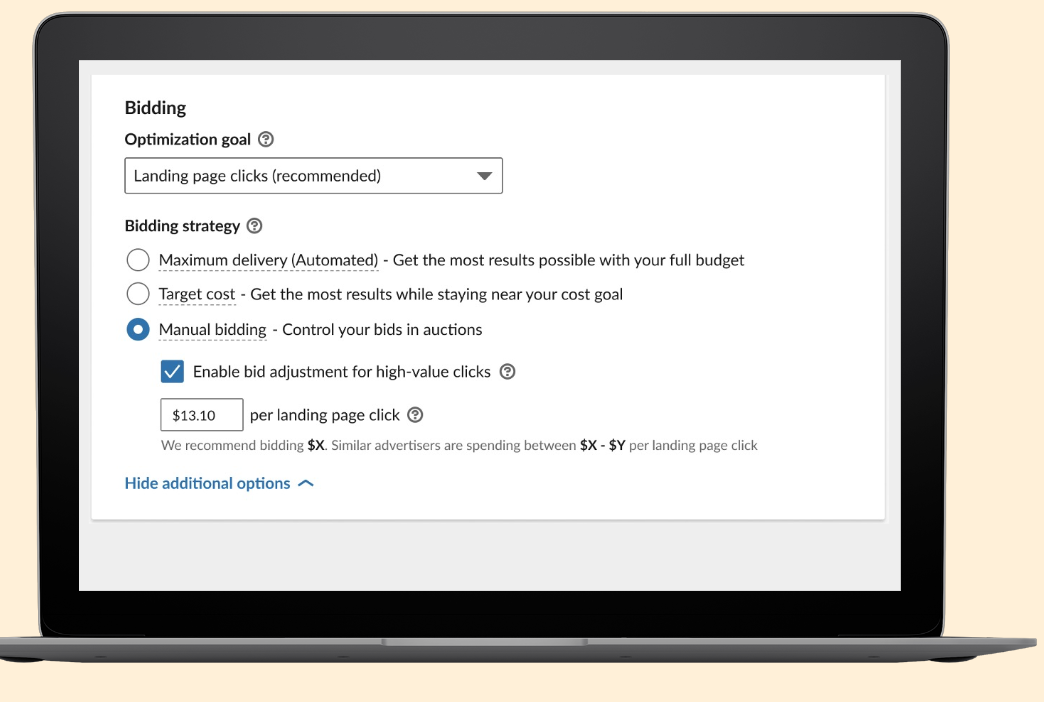
“LinkedIn ads are sold through the ad auction, where your bid competes with other advertisers who want to reach the same target audience. The target audience is made up of the LinkedIn members you’re trying to reach with the ad campaign. The cost required to win the auction depends on the bid and the desirability of your target audience.”You also have billable events on Linkedin.
“For example, what you’ll be charged for depends on the campaign objective you choose. Like if you choose the Website Visit Objective, you’ll only be charged when someone clicks the link to your website. Each campaign objective has a different billable event, and you’re only charged when that event occurs.”When it comes to Linkedin ads, you choose the type of activity you want to pay for. Your campaign objective selection determines which ad formats, bidding strategies, and optimization goals are available for your campaign. Have a look at the chart below: It outlines which campaign strategies and optimization goals correspond to the chargeable event.

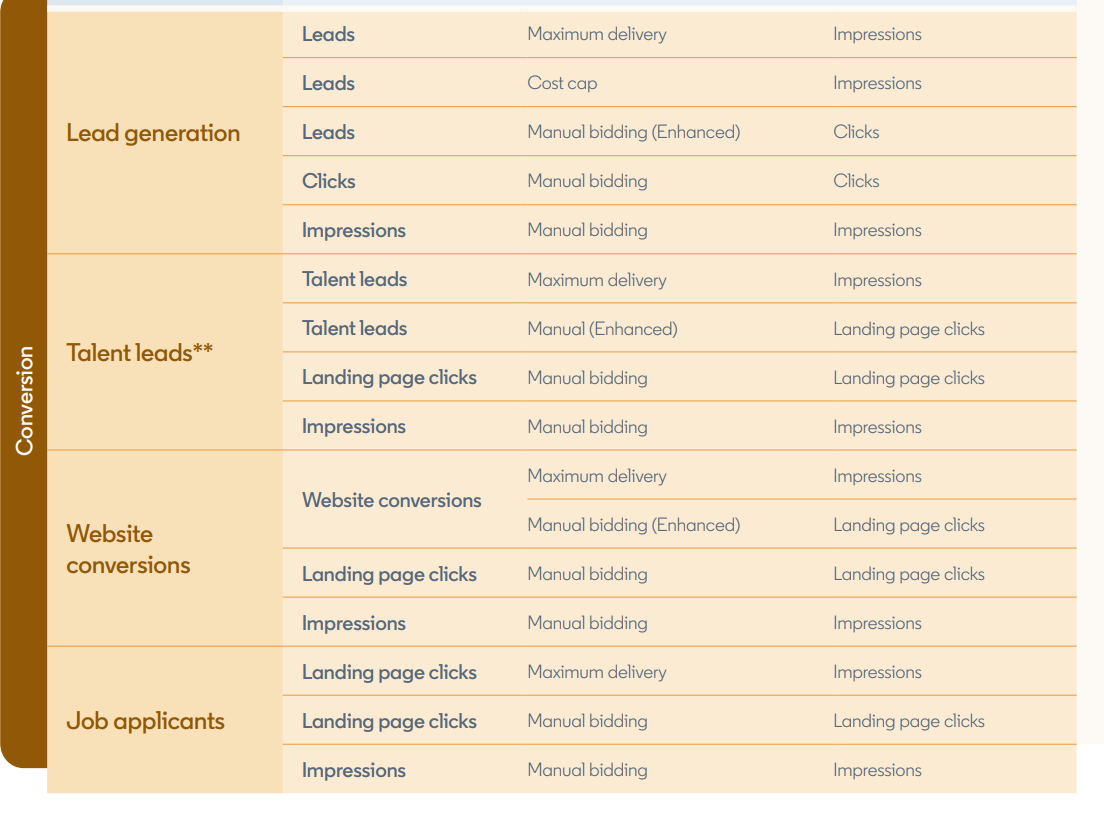
Types of Linkedin Ads
Sponsored Content
Sponsored Content, shows up on your audience’s LinkedIn feed. These ads are labeled as promoted, which distinguishes them from normal content. When advertising with Sponsored Content, you can go with LinkedIn carousel ads, single image ads, or video ads. You can see an example of sponsored content below:
Sponsored Messaging
Sponsored Messaging allows you directly advertise to your Linkedin connections through their inbox. Or via Inmail. Unfortunately, though, there is a cap on how many connections will receive your sponsored inmail per month. LinkedIn has a cap on how many members will receive a Sponsored Message ad per month. For example, a connection won’t receive the same ad more than once per month. “While 89% of consumers prefer that businesses stay in touch via messaging, only 48% of companies currently interact with customers and prospects this way.” – Hootsuite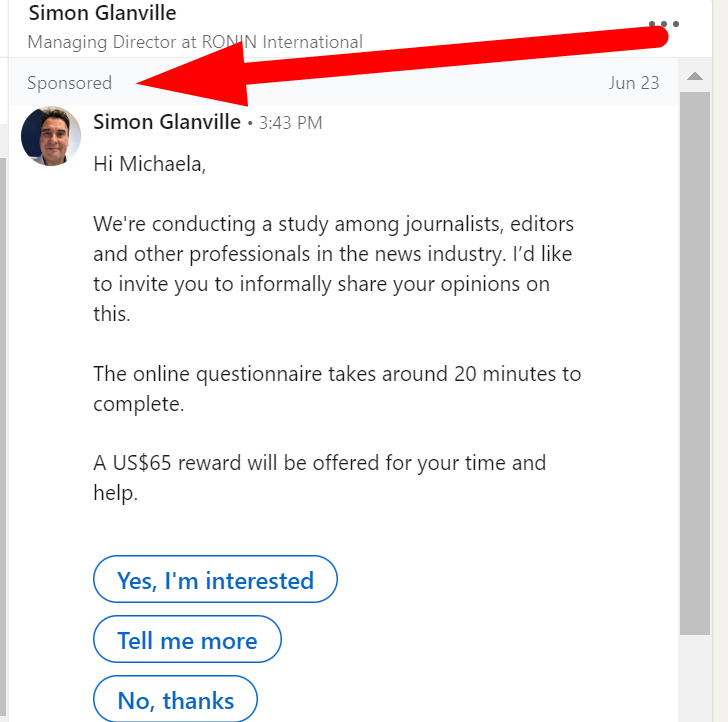
Text Ads
Text Ads show up along the top and right-hand side of LinkedIn’s desktop feed and are a good option if you’re looking for high-quality leads in a specific demographic.
Dynamic Ads
Dynamic Ads use personalization. So when dynamic ads pop up on your connections feed, it normally has their own details staring back at them. Such as their name, job title, and photo. You can also edit the settings on these ads so that they aren’t too personal. Follower Ads and Sponsored Ads are two types of dynamic ads.
- Video
- Carousel
- Lead gen forms –
- Spotlight ads
- Job ads
How to set up LinkedIn ads and choose a budget
Step 1: Log into your Linkedin campaign manager
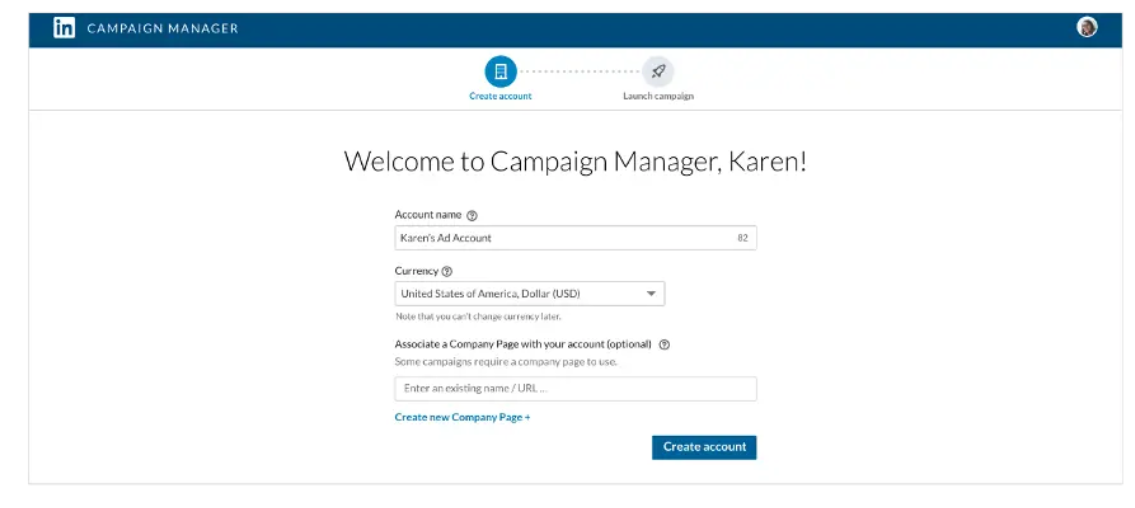
This is where you will be able to manage all your advertising campaigns.
Step 2: Select the objective of your ad
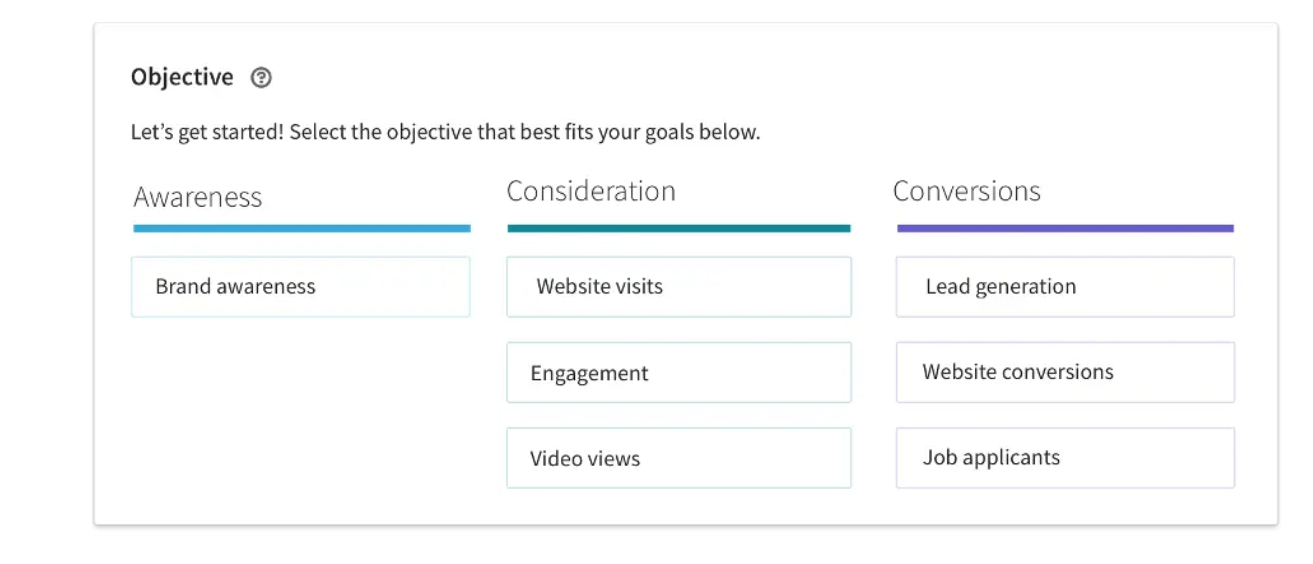
At this point, you can choose what the objective of your ad is.
Either:
- Brand awareness
- Website visits
- Engagement
- Video views
- Lead generation
- Website conversions
- Job applications
Step 3: Choose your target audience
At this point, you should choose a location, and then you have the option of adding job title, company name, industry type, and personal or professional interests.
LinkedIn recommends a target audience of at least 50,000 for Sponsored Content and Text Ads. For Message Ads, 15,000 is an ideal number.
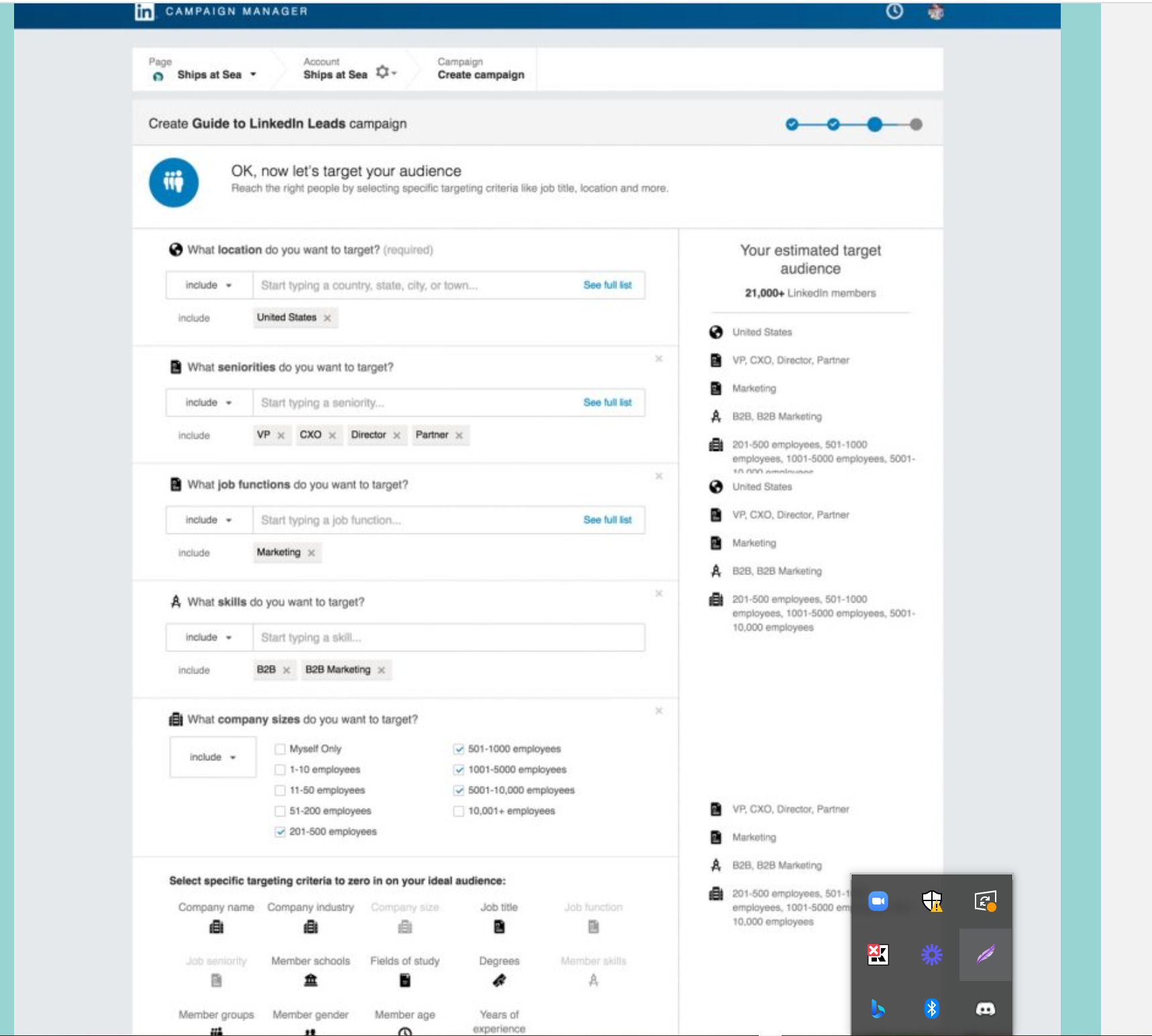
Here you can define your target audience and targeting options.
For example, you can choose:
- Location
- Seniories
- Job title
- Company name
- Years of experience
- Member age or gender
- Company size
Step 4: Choose your ad format
Next, you can choose the type of ad format you prefer for your marketing campaign.
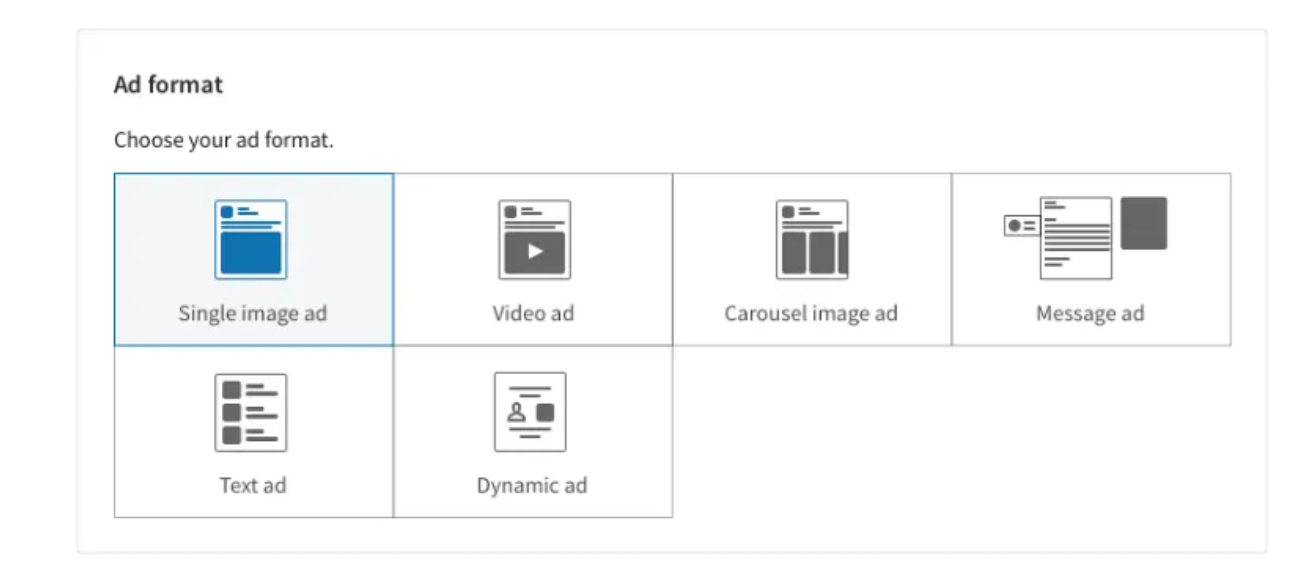
Step 5: Choose your budget
The campaign Manager will provide a budget range based on other competing bids for your ideal target audience.
The initial 2-4 weeks are typically considered a learning experience to figure out what works. LinkedIn recommends a daily budget of at least $100 or a budget of $5,000 per month.
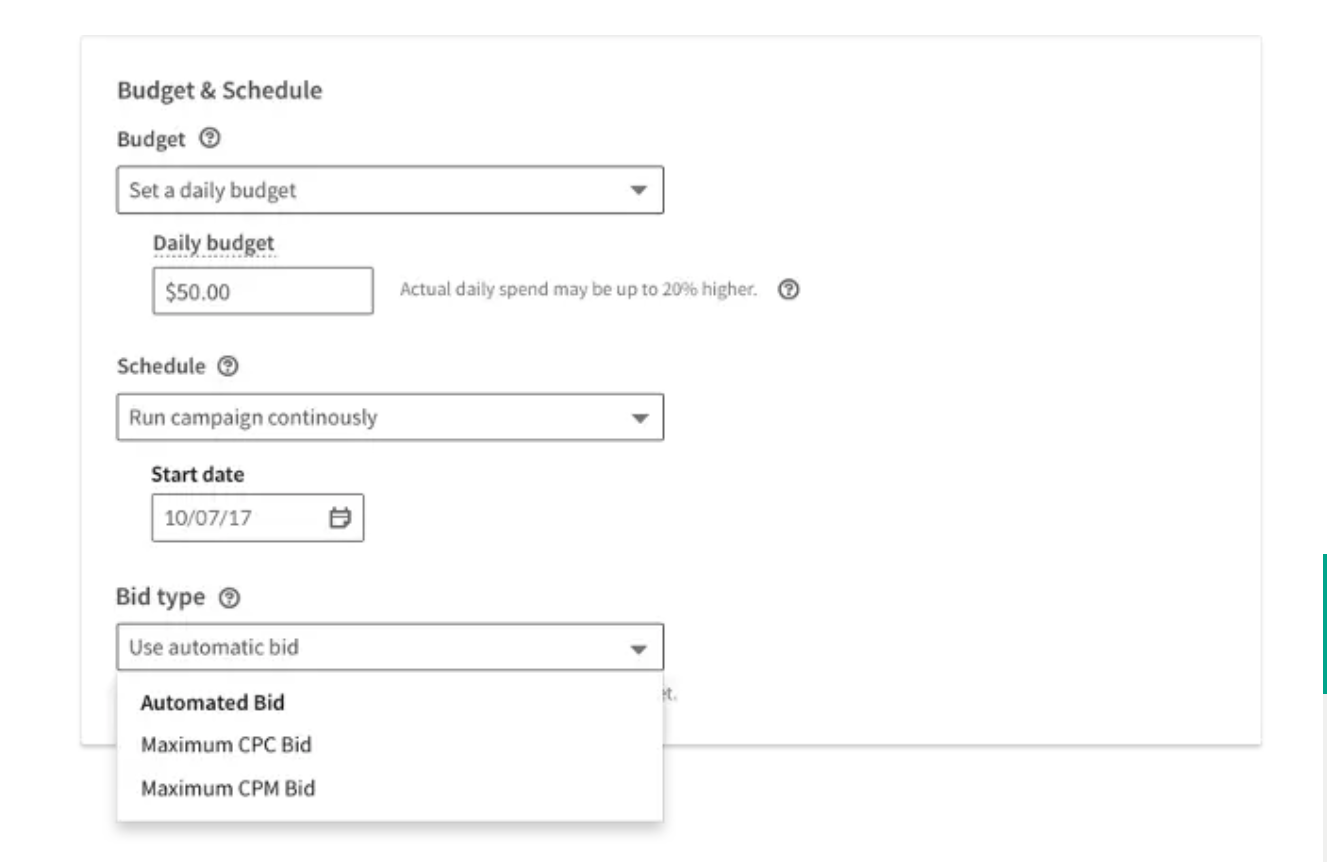

Read this Linkedin ad guide from Hubspot for greater detail.
How much do Linkedin lead gen ads cost on average?
LinkedIn ads costs depend on different factors including target audience, campaign objective, and bid.
On average, though, you can expect LinkedIn ads to cost $5.26 per click, $6.59 per 1000 impressions, and $0.80 per send.
Which option is best for your business?
Choosing the right b2b marketing strategy can make a huge difference. You need to decide whether you have time on your hands to wait for leads to come to you (for example with inbound marketing). Or if you would need to have a more targeted approach that gets immediate results.
You will also need to consider if you have the time as a busy founder to do the lead gen yourself, or if you have the budget to hire someone to do it for you.
Marketing costs can be expensive, therefore you want to choose a company or an employee who will do their absolute best for getting qualified leads and high conversion rates.
At Salesbread, for our own company, we use a mix of inbound and outbound lead generation. This has helped us gain and secure many clients over the years.
If it’s possible, using a hybrid marketing approach can be a game changer. You will still have your leads coming in via social media, seo, and content marketing over time, but you can also search for leads yourself by using a targeted, personalized approach to outreach.
Looking for 1 guaranteed qualified lead per day? Get in touch.
At Salesbread we specialize in 1 guaranteed qualified lead per day. This means you will be getting 20 qualified sales leads per month. In the past 24 months, we have generated close to 7000 qualified leads for our clients.
If this sounds good to you, read this article https://salesbread.com/the-best-done-for-you-lead-generation-service/ to see how we can help your business, with pricing less than hiring a full-time sales development rep.
